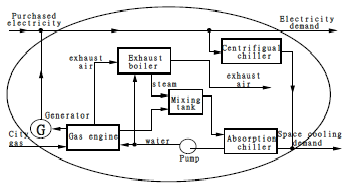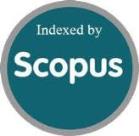Benefit Analysis of Emergency Standby System Promoted to Cogeneration System
Keywords:
emergency standby system, cogeneration system, time-of-use rate structure, mixed-integer programming, nonlinear optimizationAbstract
Benefit analysis of emergency standby system combined with absorption chiller promoted to cogeneration system is introduced. Economic evaluations of such upgraded projects play a major part in the decisions made by investors. Time-of-use rate structure, fuel cost and system constraints are taken into account in the evaluation. Therefore, the problem is formulated as a mixed-integer programming problem. Using two-stage methodology and modified mixed-integer programming technique, a novel algorithm is developed and introduced here to solve the nonlinear optimization problem. The net present value (NPV) method is used to evaluate the annual benefits and years of payback for the cogeneration system. The results indicate that upgrading standby generators to cogeneration systems is profitable and should be encouraged, especially for those utilities with insufficient spinning reserves, and moreover, for those having difficulty constructing new power plants.

Published
How to Cite
Issue
Section
License
Submission of a manuscript implies: that the work described has not been published before that it is not under consideration for publication elsewhere; that if and when the manuscript is accepted for publication. Authors can retain copyright in their articles with no restrictions. is accepted for publication. Authors can retain copyright of their article with no restrictions.
Since Jan. 01, 2019, AITI will publish new articles with Creative Commons Attribution Non-Commercial License, under The Creative Commons Attribution Non-Commercial 4.0 International (CC BY-NC 4.0) License.
The Creative Commons Attribution Non-Commercial (CC-BY-NC) License permits use, distribution and reproduction in any medium, provided the original work is properly cited and is not used for commercial purposes.



